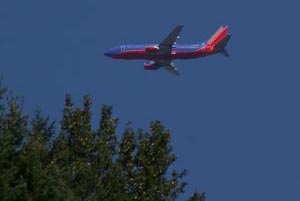Solutions to Flight Delay, Aviation Noise and Emissions
 |
Reduce Noise
|
Reduce Flight Delay
|
||||||
|
Reduce Emissions
|
||||||||
| Reduce Emissions
Several important developments are underway by aircraft manufacturers to reduce emissions. These are primarily focused on lightening the load, reducing drag and increasing engine efficiency through system design. In the past, efficiency was eclipsed by increasing power while maintaining the status quo. Pressure of rising gas prices has prompted the industry to refocus efforts on lowering fuel consumption through design, process and procedure. Alternative energy sources are the newest and most promising developments in the development of new generation aircraft. Boeing recently flew a fuel cell powered plane. Battery powered, bio diesel and hydrogen cell powered aircraft are a few of the innovations being developed by manufactures and institutions like NASA BOEING and MIT. OurAirspace is supportive of efforts to focus on alternative energy sources for next generation aviation. Tax incentives in Congress, legislation and user fees are promoted as mechanisms to maintain focus on producing these new innovations. NRDC urged the 15 major U.S. and Canadian airlines and airfreight companies to publicly oppose the use of "dirty fuels" -- jet fuel from tar sands, oil shale, and liquid coal -- and is calling on the airlines to join a campaign seeking increased investment in cleaner fuels throughout the airline industry. Links
Reduce Noise MIT has produced a program called the Silent Aircraft Initiative. Although produced as a concept in 2006, this is a solid step in the right direction. Reduce Flight Delay Flight delay and congestion will be dramatically reduced with better scheduling practices of the airlines and particularly with deployment of foul weather automated re-routing systems like the ones being developed by MIT. 1 Operational caps and slot control at airports is a proven temporary mechanism to control flight delay until more permanent measures are taken to increase capacity like expanding airport runways and hiring more air traffic controllers. Other reliable mechanisms in congested airspace to reduce flight delay include automated scheduling and rescheduling of flights by commercial aircraft carriers particularly in the event of foul weather. INGENUITY Aviation Industry manufacturers are seeking to find new ways to address jet engine noise and emissions. NASA, GE are pioneering initiatives to solve these problems. These programs need support and incentives to become reality. Call your congressional representatives and tell them you support initiatives which solve the problems. REFERENCES
|
||||||||
OurAirspace
ourairspace.org
contact@OurAirspace.org
HOME | What to do | Legislation | Scientific Studies | Research | Solutions | Contact | About | News